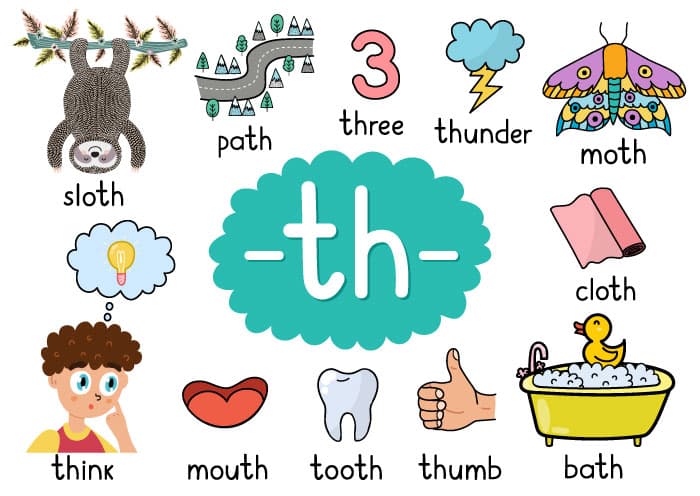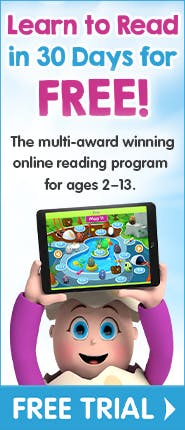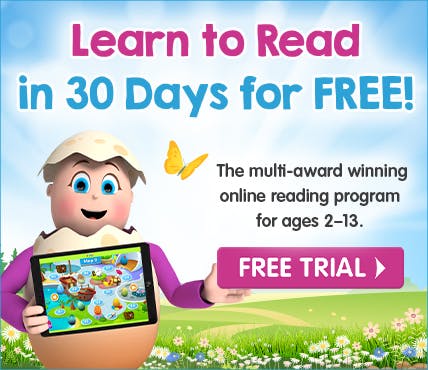


How Phonics Helps Kids Learn to Read

Learning to read is a skill that needs to be developed and nurtured for kids. Help your child learn to read with a Reading Eggs Free Trial.
For some kids, learning to read can be easily picked up; a skill that they enjoy and want to acquire. Successful reading builds confidence in a child which helps their overall learning journey. In some instances, it’s not an easy path and there may be a need for extra for support. Regardless of the speed and desire to learn one thing is clear: reading is a skill that needs to be developed and nurtured over time.
Try Fast Phonics and Reading Eggs for FREE!
Fast Phonics is Reading Eggs' online synthetic phonics program that helps children become strong readers. Based on solid scientific research, Fast Phonics uses the proven power of systematic phonics instruction to boost reading skills fast! Get a Free Trial today for access to 20 fun‑filled levels where your child can learn key phonics skills including letter‑sound recognition, blending and spelling.
At Reading Eggs we have a strong focus on learning to read and have skilled educators build our programs with scientifically proven methods to aid the development of this skill. Reading Eggs and Fast Phonics are two programs that can work together to foster this instruction. They can be used alone or together to support early learners in their journey to proficient reading.
There is a science behind learning to read and it can be broken down into two key learning areas Language Comprehension and Word Recognition as discussed in Scarborough’s Reading Rope. Elements within these key learning areas are covered in Reading Eggs and the Fast Phonics programs.
To find out how to get the most out of a Reading Eggs subscription, which includes Fast Phonics, or if you’re not sure how these programs can work together to help your child learn to read, we have put together some questions and answers from one of our educational experts, Sara Leman.
What’s the difference between the Fast Phonics and Reading Eggs programs?
Learning to read is a series of ‘building blocks’ that include phonics instruction. This is where children are taught to map letters to sounds to be able to read words.
The multi-award winning Reading Eggs program includes phonic instruction as part of a much broader approach to teaching reading. The program also covers in great depth the additional key skills of phonemic awareness, fluency, vocabulary, and comprehension. There are opportunities within Reading Eggs lessons to build spelling skills, as well as writing skills in the Story Factory area of the site.

Phonics instruction and phonemic awareness are building blocks of learning to read.
The Reading Eggs approach to phonics is varied. It includes sounding out letters, as well as building words using onset-rime. For example, a child will see the letters ‘cr’ (onset) and ‘ab’ (rime). They are then shown how to put the word together to make ‘crab’. Following on, children are then given the opportunity to make and read other words that have the same ‘cr’ onset, such as ‘crash’ and ‘crack’. Aimed at 3–7 year olds, initial Reading Eggs lessons can be used successfully by young children who are complete beginners with no reading experience at all.
The Fast Phonics program takes a different approach to teaching reading, and as the name suggests, is essentially focused on building phonics skills. The program is based on academic and government-led research into the most effective method to teach reading which is synthetic phonics instruction. Synthetic phonics involves identifying sets of letters and sounds; blending the sounds all the way though the word; and then segmenting the word into sounds to spell it. For example, children learn that /c/ /a/ /t/ are three individual sounds that can be sounded out and then blended together to make the word ‘cat’. Fast Phonics is an online systematic, synthetic phonics program designed for 5–10 year olds. These can be emergent and early readers, as well as older students with gaps in their core reading knowledge.
Which program should a parent select for their child to begin their learning journey and when is a good time to start in each program?
For many children, having access to the Reading Eggs program may be all that is required to build early reading skills.”

Kids can take part in this learning journey at their own pace. Parents can see their results and help place them at their best starting level.
Parents can adopt a flexible approach to using Reading Eggs and Fast Phonics programs. They may prefer their very young children to start the journey with the Reading Eggs Junior program, aimed at 2–4 year olds. Children can then transition to Reading Eggs and sit the placement test that will assess their prior knowledge and skills and place them on the appropriate map for their learning.
For many children, having access to the Reading Eggs program may be all that is required to build early reading skills. However, some children may benefit from additional phonics support that can be gained via the Fast Phonics program. In this way, the two programs can work simultaneously to build fundamental skills and increase motivation levels.
Fun phonemic awareness activities online!
Reading Eggs features hundreds of fun and interactive online lessons that build essential phonics and phonemic awareness skills. Based on solid scientific research, the program has been shown to increase children's reading skills in just 15 minutes a day.
Parents may notice that their child is struggling with Reading Eggs lessons or quizzes. In this case, they may choose to stop using Reading Eggs and move their child directly to Peak 1, which is the beginning level of Fast Phonics. On completion of the Fast Phonics program, the child can then re-sit the Reading Eggs placement test and resume Reading Eggs lessons.
Parents of older children with gaps in their reading skills may like to start their child off on Fast Phonics. On completion of the program, the child can transition to Reading Eggs, or even Reading Eggspress depending on their age and ability.
Ultimately both programs are based on best practice, scientific research into how children learn to read.”
Incidentally, synthetic phonics instruction is mandatory in the UK and therefore the Fast Phonics program would be the recommended program for Kindergarten and Year 1 children.
Both the Reading Eggs and Fast Phonics programs work best when the child works through the lessons systematically. Revision and repeating lessons are always encouraged to consolidate skills, but we don’t recommend that the child jumps around from one lesson to another when they are working through the program.
Is there a point where these programs can or should be combined? At what point in a child’s learning is that and how can this be facilitated?
There is no set point where the programs should be combined as they are both quite different in their approach. Children who are working confidently through the Reading Eggs program may be able to switch between Reading Eggs and Fast Phonics simultaneously after a few maps. Some children will benefit from keeping the two programs completely separate and start with Fast Phonics, and then sit the Reading Eggs placement test on completion of the Fast Phonics program. Other children may complete all of Reading Eggs first, and then benefit from a phonics boost with the Fast Phonics program.
Both programs have a placement test, and this is the best way of ensuring that a child is placed at their correct level.
Can you outline the benefits to a child’s learning when Reading Eggs and Fast Phonics are combined? How can this impact their learning in the future?
As mentioned previously, combining the programs and working on them simultaneously may not be the case for all children. Many children will benefit from starting with Fast Phonics, then sitting a Reading Eggs placement test. Or vice versa if the child starts with Reading Eggs, is experiencing reading difficulties and needs a phonics boost.
Ultimately both programs are based on best practice, scientific research into how children learn to read. Both programs are fun-filled, rewarding and full of motivational elements to keep children on track and to make learning to read less of a chore. Both programs have a wealth of additional resources and reading books to practise and consolidate new skills. Both programs also have detailed assessments and reporting for parents.

Reading Eggs Map. The program is based on best practice scientific research. So, kids can learn and have fun. Get a 30‑day Free Trial today!
For those children who are struggling with phonics, Fast Phonics can offer them the additional support they need to decode words quickly and confidently. However, both programs aim to help children to become strong, independent readers.
Success in this key area sets kids up for success in other areas.
In the beginning kids learn through play. This idea is so important to Reading Eggs that we have built this idea into our learning programs so kids can gain essential knowledge and have fun at the same time. Reading Eggs and Fast Phonics are intended to be used in this way, so kids can learn and have fun.
Learning to read is an essential skill for children and forms the beginning of a learning journey. Success in this key area sets kids up for success in other areas of their development as it gives them the confidence to progress and flourish in this educational adventure.
Learn to read for FREE in 30 Days, click here to learn more.


